Meet the people behind the film Hidden Figures
A college professor and a historian reveal how they helped moviemakers get the story — and math — right
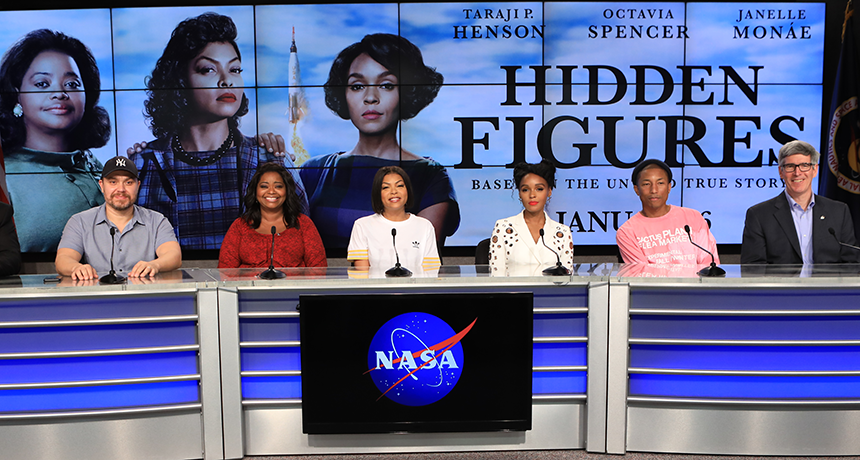
NASA held a press conference last year about Hidden Figures. From left: director Ted Melfi, Octavia Spencer (Dorothy Vaughan), Taraji P. Henson (Katherine Johnson), Janelle Monáe (Mary Jackson), producer Pharrell Williams and historian Bill Barry.
NASA/Kim Shiflett
By Gerri Miller
In February 1962, astronaut John Glenn made history as the first American to orbit Earth. Few people today are aware of how uncertain it was as to whether he’d make it home. Or they weren’t until the movie Hidden Figures recounted the story.
But the movie isn’t really about Glenn. The real heroes of the film are the female African-American mathematicians who worked behind the scenes — as human “computers” — to make sure the critical numbers added up for plotting Glenn’s safe return.
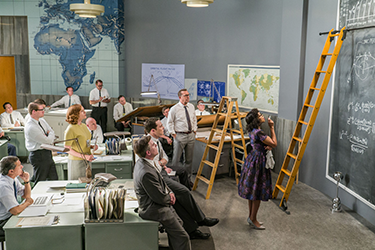
The 2016 movie was based on Margot Lee Shetterly’s book of the same name. The film focuses on three women in the 1960s who worked at NASA’s Langley Research Center in Hampton, Va. (NASA is short for the National Aeronautics and Space Administration.) Opportunities at the space agency for women and for people of color, back then, did not match those for white men. But Katherine Johnson, played by Taraji P. Henson in the movie, and her colleagues Dorothy Vaughan (Octavia Spencer) and Mary Jackson (Janelle Monáe) were still able to perform important work. And now they’re finally getting the widespread respect and visibility that their achievements deserved.
Bringing accuracy to this uplifting story on the big screen would not have been possible without the help of experts in math and in NASA’s history. These experts worked closely with Hollywood filmmakers to ensure everything was correct. This included the dialogue, the action and every mathematical formula shown.
Here, we’ll find out how they did that. We’ll also meet an aerospace engineer who reveals how she got to NASA and what it’s like to work there today.
Math teacher to the stars
Rudy L. Horne teaches math to students at Morehouse College in Atlanta, Ga. But for a time, he also put in extra time on a movie set, teaching formulas to Taraji P. Henson. And he gave this acclaimed actress plenty of homework!
Hidden Figures was filmed in Atlanta, not Hollywood. So the production needed a local math expert to work with the cast. When 20th Century Fox came calling, Morehouse College recommended Horne. And he seemed perfect for the job. After all, he had a strong background in physics and taught applied math — how math can solve real-world problems.
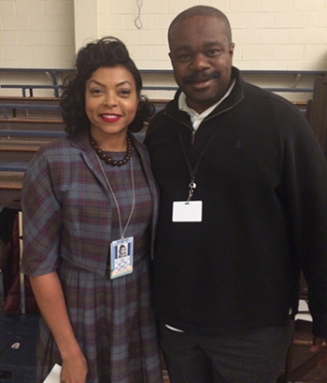
Before shooting began, Horne met with writer-director Ted Melfi. Melfi asked the teacher to make suggestions about the script.
The movie focuses on John Glenn’s re-entry orbit and getting the astronaut back in one piece. A central problem was how to portray Glenn’s re-entry. “We wanted the math to complement the bigger story and be consistent,” recalls Horne. He knew about a certain set of equations that describe that orbital motion. Horne told Melfi about Euler’s Method. It’s a formula applied to physics problems that involve a moving object that is subject to changing forces. Melfi added it to his script. “I brought that to the film,” Horne says.
Horne’s main assignment, though, was to work with the cast. “Everything you see them writing on the board, I told them to write,” he says. He gave Henson formulas to memorize. And when the child who played the young Katherine was asked to solve a complex problem in math class, it was Horne who wrote the equation. Indeed, he points out: “The handwriting is my handwriting.” Later — “like lines of dialogue” — he had the young actress memorize each step to solve it.
Horne also worked with the props department to provide the appropriate math equations seen in the background of scenes. All of this meant he needed to visit the set about a dozen times.
“It was cool to see how they put everything together,” he says. “I’m happy they trusted me.” This math teacher loves how the movie turned out and is glad to have played a part.
“Your laptop can do more than an entire room of computers back then. But it shows how much good, old-fashioned brainpower counts,” he notes.
The filmmakers “set out to tell a good and believable story,” Horne observes. “They did that. And if it influences people to study math and science, great!”
Bringing hidden history to the big screen
Bill Barry has loved outer space since he was four years old. That’s when he watched Glenn’s history-making flight. Years later, Barry became an Air Force pilot. Then in 2001, he joined NASA, and for the past seven years has served as the space agency’s chief historian, based in Washington, D.C.
Barry has provided feedback for movies and TV shows before. But, he notes, this was never to the extent he did on Hidden Figures. He provided Horne with some of the actual documents that Johnson had used to make her calculations.
Story continues below image.
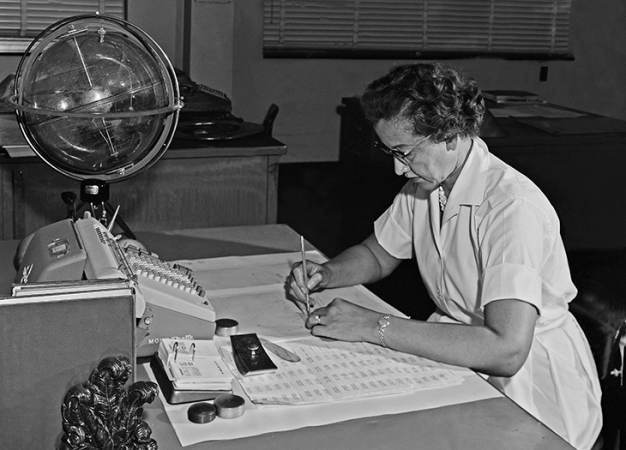
His main job, however, was to review the script and point out inaccuracies or lines that a NASA person would never say. He was brought in after the script was written. Still, he notes, the filmmakers were willing to revise the script “to reflect things that should or shouldn’t be in it.” For instance, he nixed the idea of Pentagon bigwigs watching a Russian space launch in real time. That couldn’t have happened back then.
But the filmmakers did not always heed his advice. “There’s a scene where Mary Jackson [played by Janelle Monáe] walks through the wind tunnel,” he notes. Along the way, she gets one of her high heels stuck. “People don’t walk through a wind tunnel at NASA,” Barry told them. But Ted Melfi chose to keep this scene anyway. He liked its dramatic touch.
Some events are depicted on screen as happening at times other than when they actually occurred. Between 1943 and 1970, about 60 African-American women worked in the mathematicians pool. There were about 20 at any given time. They worked there until they were given another assignment or promoted. “Dorothy Vaughan was hired in December 1943.” Points out Barry: “She became the supervisor of the unit in 1951 — not 1961, as shown in the movie.”
The film took a few other liberties when depicting civil rights changes at Langley. “The movie compresses them into 1960 to 1962,” Barry says, when in fact, they happened over a far longer period. Similarly, the “separate bathrooms for African-Americans vanished by 1958, as they built new facilities” — not during the ‘60s as portrayed in the movie.
Today, 17,000 people work at NASA headquarters and 10 field centers around the country. About one-third of them are women. And roughly one in every five of those women are African-American. “We’re trying to improve those numbers,” Barry admits. NASA, he says, would “like to see a more diverse workforce.”
He thinks Hidden Figures can help on that score. “One reason NASA wanted to engage with the movie is we saw it as a way to get the message to young people about the value of a STEM education.” (By STEM, he means science, technology, engineering and math.)
The movie “has such a clear message that there are role models out there that you can follow. We hope that people see the diversity of people working at NASA and think, ‘I can work there too.’ I’m positive that we’ll reap the benefits for a long time. And I think the movie will have an impact the same way [the movies] The Right Stuff or Apollo 13 had in the past.”
New role models
Shelia Nash-Stevenson is an aerospace engineer. When she received her doctorate in physics from Alabama A&M University in 1994, she became the first African-American woman to get a physics PhD in her state. Even before she got that degree, she worked as an electronics engineer at NASA’s Marshall Space Flight Center in Huntsville, Ala. Today, she serves as a project manager for a space mission involving the United States and Brazil.
Before Hidden Figures, Nash-Stevenson had never heard about the female “computers” portrayed in the movie. But she’s grateful to them for paving the way for her — and also for what they stand for.
“Every young girl needs to see this movie because it’s a positive image of females,” she says. “It’s not about outside appearance. It’s about what you’ve got in your head. Young girls can see the work these women did and be inspired.” Nash-Stevenson just wishes she had role models like them when she was growing up.
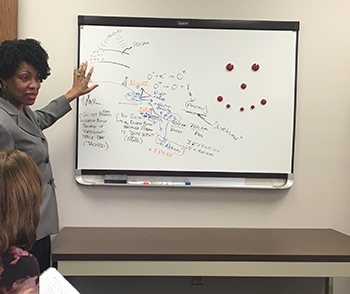
Back then, she says, “I didn’t know that anything I do now was possible for females — that it was okay to be different and that girls can do everything. There were so many possibilities I could have taken advantage of that I didn’t know about.”
Nash-Stevenson grew up in rural Hillsboro, Ala. As a child, she sometimes worked weeding cotton, earning $5 a day. Early on, she knew she didn’t want to spend the rest of her life in the cotton fields. So she focused on school. She loved math and science. She studied electronics engineering in college and eventually pursued a master’s degree in physics. Then, over a 10-year span — all the while working full time and raising two children — she earned her PhD.
Her determination paid off in a job she loves. That’s why she encourages students to take STEM classes. “They’re not as hard as they appear to be,” she says. “And they open up so many opportunities.” Some schools offer engineering academies. “I wish they had that when I was growing up.”
Horne notes that his historically black college, Morehouse, offers a New Math Program. It brings middle-school and young high-school students to the campus in summer. Horne teaches a pre-calculus class as part of the program. But students also can study physics and chemistry. Many take field trips. Even though Morehouse is a college for African-American men, its New Math Program is open to anyone.
NASA, too, offers many programs, including internships, to get students involved in STEM. For instance, Barry notes, it sponsors science projects such as the Team America Rocketry Challenge. And NASA’s website offers a lot of STEM-based materials targeted from young kids to older teens.
Indeed, Nash-Stevenson recommends, teens today should take all the math and science they can. “Once you get started,” she says, “you’ll realize that it’s not difficult to make it in those fields. Even if you choose another route, you will at least have the background. And more options will be available to you.”
Correction: Glenn was not the first man to orbit Earth. Soviet Yuri Gagarin preceded him by nearly a year.







